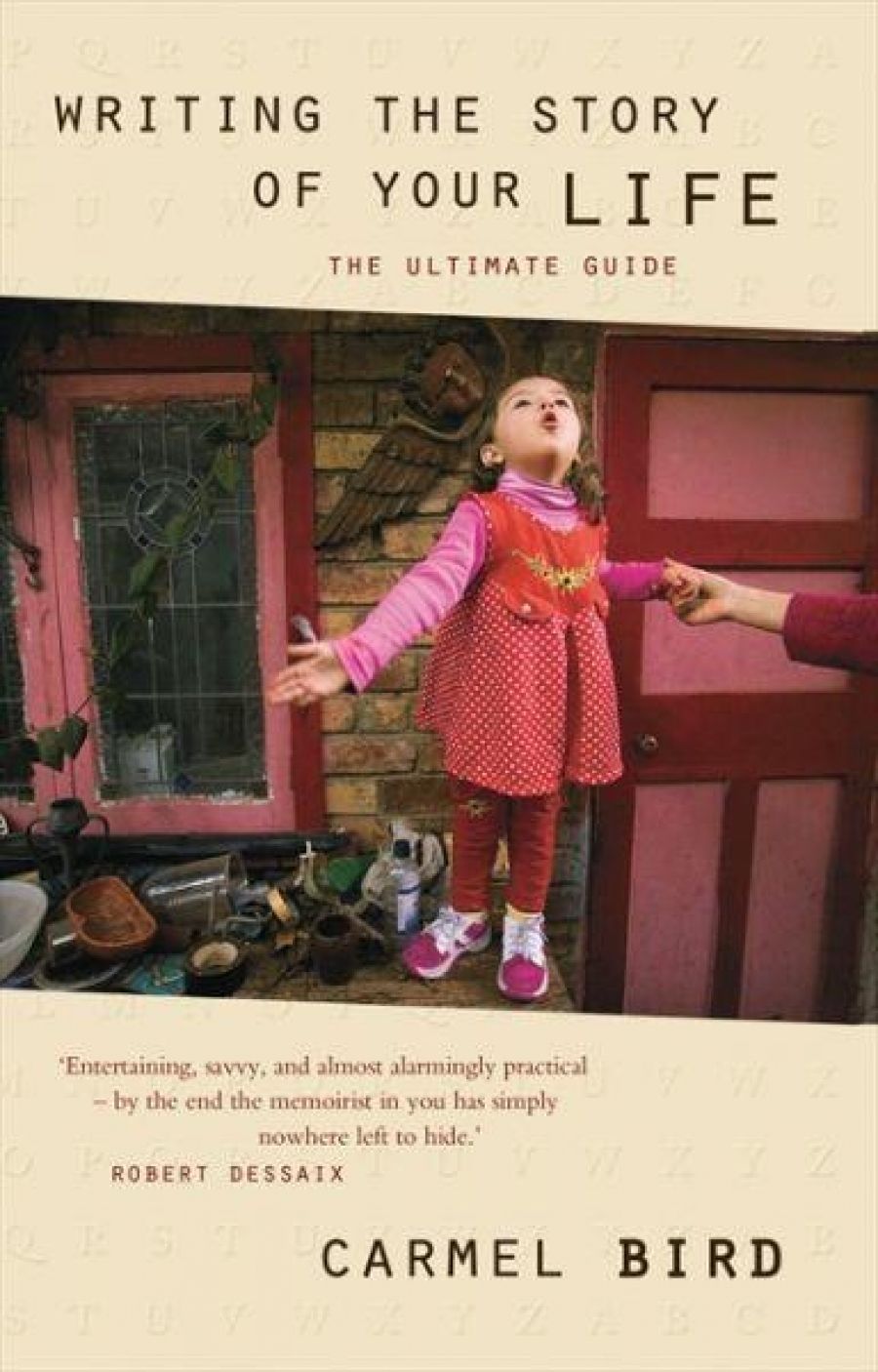
- Free Article: No
- Contents Category: Literary Studies
- Review Article: Yes
- Online Only: No
- Custom Highlight Text:
While Australian women in particular have been avid diarists and letter-writers, the activity du jour is overwhelmingly the writing of memoir, inspired by the notion that everyone’s life is memorable and worth recording. Some memoirists are searching for the truth of their lives, to recover the past or perhaps recover from it. Some are simply recording their story for family consumption. Others, the more ambitious, are seeking publication and fame. Carmel Bird’s advice to them – ‘Stay young. Stay Beautiful. And maybe climb Everest with your eyes shut’ – is the only pessimistic comment in this whole book.
- Book 1 Title: Writing The Story Of Your Life
- Book 1 Subtitle: The ultimate guide
- Book 1 Biblio: Fourth Estate, $24.95 pb, 323 pp
In Writing the Story of Your Life, Bird emphasises the joy of exploring and writing about the past, whatever the intent. She guarantees that, if both memory and the imagination are fully engaged, the memoir will become ‘the most dynamic, original and absorbing story you will ever know’. She argues for discipline, for a structured and dedicated approach. Keep writing; keep the continuity of creative effort; become obsessed. Nothing succeeds like obsession.
Is it possible to teach Creative Writing? The Ultimate Guide convinces me that it is. In the words of the author: ‘Nobody can teach you to be a genius – nobody can make you into Nureyev, but they can probably teach you to dance.’ And who better than Bird to teach us? She is the author of two previous writers’ guides and a well-known teacher of both fiction and memoir writing. She is, as well, a successful fiction writer, essayist and editor. Her eight novels – Cape Grimm (2004) is the latest – testify to the workings of the creative, often Gothic, imagination. In all her writing, she shows a fine eye for detail, particularly in her recall of the world of her childhood, so important for memoir writing. Much of it is autobiographical, and Bird has written at length of the shifting and tantalising relationship between fact and fiction. Moreover, she insists that, if we seek the true ‘texture and meaning’ of our past, the narrative should not be simply a recitation of the ‘facts’ but an imaginative reconstruction of them: ‘reality needs fiction to be complete.’
Bird’s most important recommendation is the use of speed writing, free writing within a prescribed time. ‘Perhaps the swiftness of the writing, the lack of censorship, the feeling of creating with the pen ... is a key to the power and significance of this kind of writing.’ Shedding ingrained patterns and inhibitions, the writer seeks a return to the sense of wonder enjoyed by the child when all the world was fresh and new. The cover takes up this point. A vividly dressed and joyful child, on tiptoe, is singing with all her heart. One hand, that’s all, is supported by an adult outside the frame. The child is standing on a bench covered with what looks like discarded junk. But is it junk or treasure from the past, from what W.B. Yeats has called the ‘foul rag-and-bone shop of the heart’? To tap into this, the murky level of memory and the subconscious, is or should be the aim of every memoirist.
The guide is an antidote to the belief that writing is a breeze, that the words will come automatically, that knowledge of grammar and construction is unnecessary. It contains practical advice on libel (consult a solicitor), on masquerade (with reference to the Demidenko affair), on consciously choosing and cultivating a ‘point of view’. Bird recommends the use of a ‘guiding metaphor’, perhaps ‘something in the external world which opens pathways to the internal world’. She reminds us that Drusilla Modjeska did this to great effect in ‘The Winterbourne’ (The Orchard, 1994). She warns against revenge writing (it damages the writer more than the target) and self-indulgence (boring). The memoirist should always retain ‘a firm consciousness of the eye and ear and mind and heart of the reader’. Bird’s comment on a problem which besets all memoirists – that of hurting others – is shrewd: if the memoir is accurate, is true to itself, ‘someone probably will get hurt’.
The most valuable section of the Guide is probably its analysis of sentence structure, word choice and the rhythms of the language. Bird emphasises the energy of the active rather than the passive construction, the power of a well-chosen verb, the avoidance of abstractions and clichés, and provides telling examples of the woeful as well as the wonderful use of language. The detailed and practical discussion of the various tenses is particularly enlightening. According to Bird, ‘tense is the verbal expression of time. You live and die by your tenses.’ What wonderful names she gives them: the ‘habitual past’ (used to), the ‘incompetent present’, the ‘ecstatic and eternal present’ (I like that one!). What a boon for an ungrammatical generation.
Writing the Story of Your Life is wise and witty (look at the chapter headings). It promises excitement and fulfilment as well as hard work for the writer. It is seeded with inspirational quotations, the bons mots of the famous and in-famous, from Marcel Proust to Raymond Chandler to Hal Porter (a particular favourite). As well, there are exemplary passages from Bird’s own work and that of others. I can imagine it being swooped upon by the solitary writer as well as by the many members of community life-writing groups. The twenty-eight graded exercises could well structure a year’s writing.
Yes, it’s happening everywhere! On a more existential level, Bird suggests that the sum of all this life writing might well constitute a vast ‘conversation’ with ‘the rest of humanity’. The weaving of a web of intertwining and interpenetrating personal stories; I like that.


Comments powered by CComment